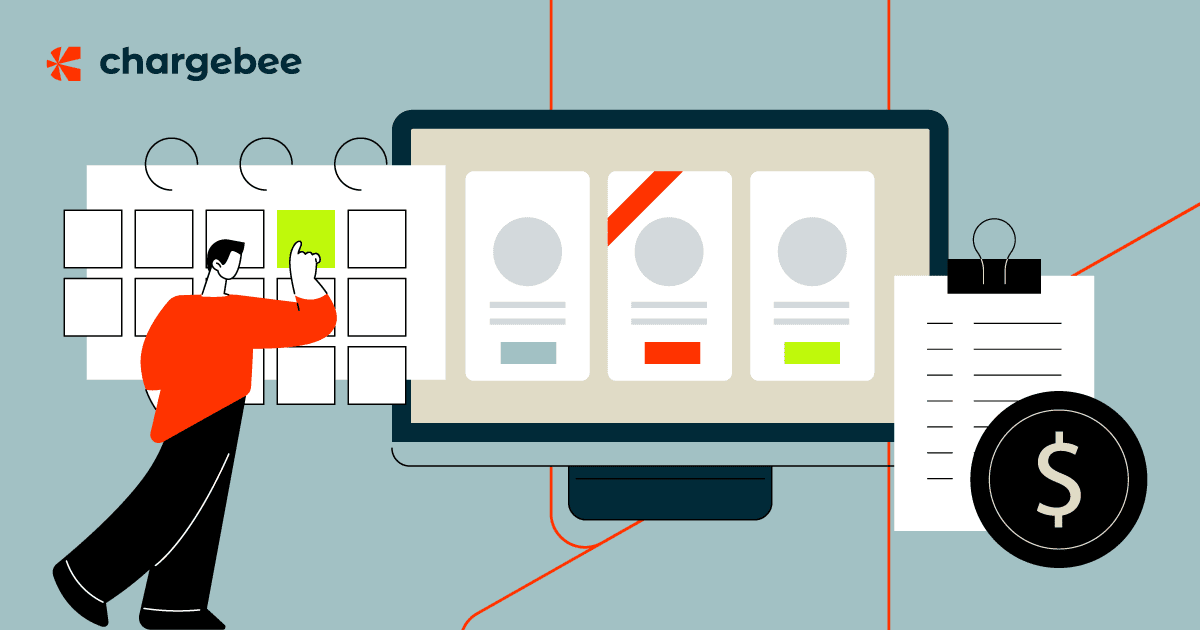
Over the past 5 years, more web and offline companies have shifted or entered the subscription business. You can find subscription business models across nearly every industry, from food to retail, books to software. Let’s dive into the world of subscription business.
What is Subscription Business?
As the name suggests, subscription business is a business model where customers pay for goods or services on a subscription basis. Subscription price is usually based on value consumed by the users and is charged on a regular schedule (mostly monthly, quarterly or annually).
Subscription Commerce Business: Physical vs. Digital
1) Subscriptions in the Physical World
The subscription model has been long been used in the offline world, mostly in the publishing industry. Readers have been subscribing to magazines and newspapers for years. Other services that are provided on subscription basis include warehouse club and health club memberships.
In the physical world, the payment of a subscription fee entitles the customers access to the product or services for a defined period.
2) Subscriptions in the Digital World
Digital subscriptions are tied to services (digital or otherwise) and there is no exchange of physical products. In case a product is involved, such as in DVD subscriptions, the entire account is managed online allowing the company to manage it as a service. Netflix is a good example of such a business.
Subscription Business Model Canvas
According to Alexander Osterwalder and Yves Pigneur, authors of Business Model Generation, every company should have a business model canvas. The “canvas” simply refers to the building blocks that are crucial to a company’s growth and success. Founders and business managers need to focus their attention on these building blocks.
The building blocks are different depending on the type of company. However, they can be modified to fit every type of business.
In the subscription business, some building blocks are more important than others. Let’s go through the building blocks.
Key partners: The partners for subscription business will vary depending on industry.
Key activities: The main activities are all about solving customers problems, whether it is offering gift boxes (Birch), SaaS services (BaseCamp), articles (Harvard Business Review), etc.
Key resources: Especially for digital companies, the most important resources are human and intellectual. These includes designers and developers as well as IP property (articles, videos, etc.) being sold.
Value proposition: The value of subscription business is providing products or services to customers at a reasonable recurring price.
Customer relationships: This will depend on the type of business. For digital customers, most relationships are based on self-service and automated models to keep costs down.
Channels: Online subscription businesses are run on the web or through an app.
Customer segments: Given the low recurring revenues per customer, subscription businesses typically target mass markets to get significant recurring revenues. Some companies such as Svbscription target niche customers.
Cost structure: Most subscription businesses have significant fixed costs. There is little to no significant variable cost for every additional customer.
Revenue streams: Primary revenue comes from recurring payments made by customers.
Types of Subscription Business Models
Subscription models can generally be categorized into three main types, each with its unique value proposition.
1) Sampling Subscriptions
Companies whose offers are based on sampling subscriptions simply curate and send items that they think their customers will like. Birchbox started this model with a combination of lifestyle and beauty products offered for $10 a month.
Other companies leveraging on the sampling model include Citrus Lane, Club W, Foodzie, Blissmo and others. For merchants following this model, variety and low price are key to sustainable growth.
2) Bargain subscriptions
This model is attributed to the short-lived direct-distribution CD subscription business. Customers simply sign up to get products at bargain prices with the reassurance that they can skip or cancel subscription in the future.
ShoeDazzle is one of the dominant players following this model, although it is moving away from subscription. Other players in the shoe category that follow the original model include Sole Society, JustFab, and ShoeMint.
3) Consumables subscription
This model is mainly focused on consumable products: diapers, razors, flowers and others. Customers receive a discount when they buy the product direct. They also receive more products when their supplies are just running out.
For example, The Honest Company not only lets you buy diapers, but you can also pick the patterns you want for the month.
Most of the innovations by subscription commerce companies are an amalgamation of traditional sales with social commerce.
Factors for Subscription Business Model Success
With a subscription business, value proposition is critical to the success of a company. Your customers must feel they are receiving more than they are paying for the value of your product or service. Companies need to watch different SaaS metrics (which can also apply to any subscription commerce business) to ensure sustainable growth.
Resources must also be managed careful. This is true for both physical and digital businesses. While physical business must maintain their infrastructure to increase the perception of value, digital business must develop and maintain virtual assets like media and content.
Another factor to consider is cost structure. The cost structure ties closely to value proposition. You need to carefully consider the cost implications before offering unlimited product or services at a single price. Your fixed and variable costs should guide you in the pricing structure. Losing control of the cost structure can make a business bleed.
So, do you have a suggested article we should mention in suggested reading for subscription models? Please let us know.
Further Reading
Subscription Business Payments
Web Subscription Business Models


